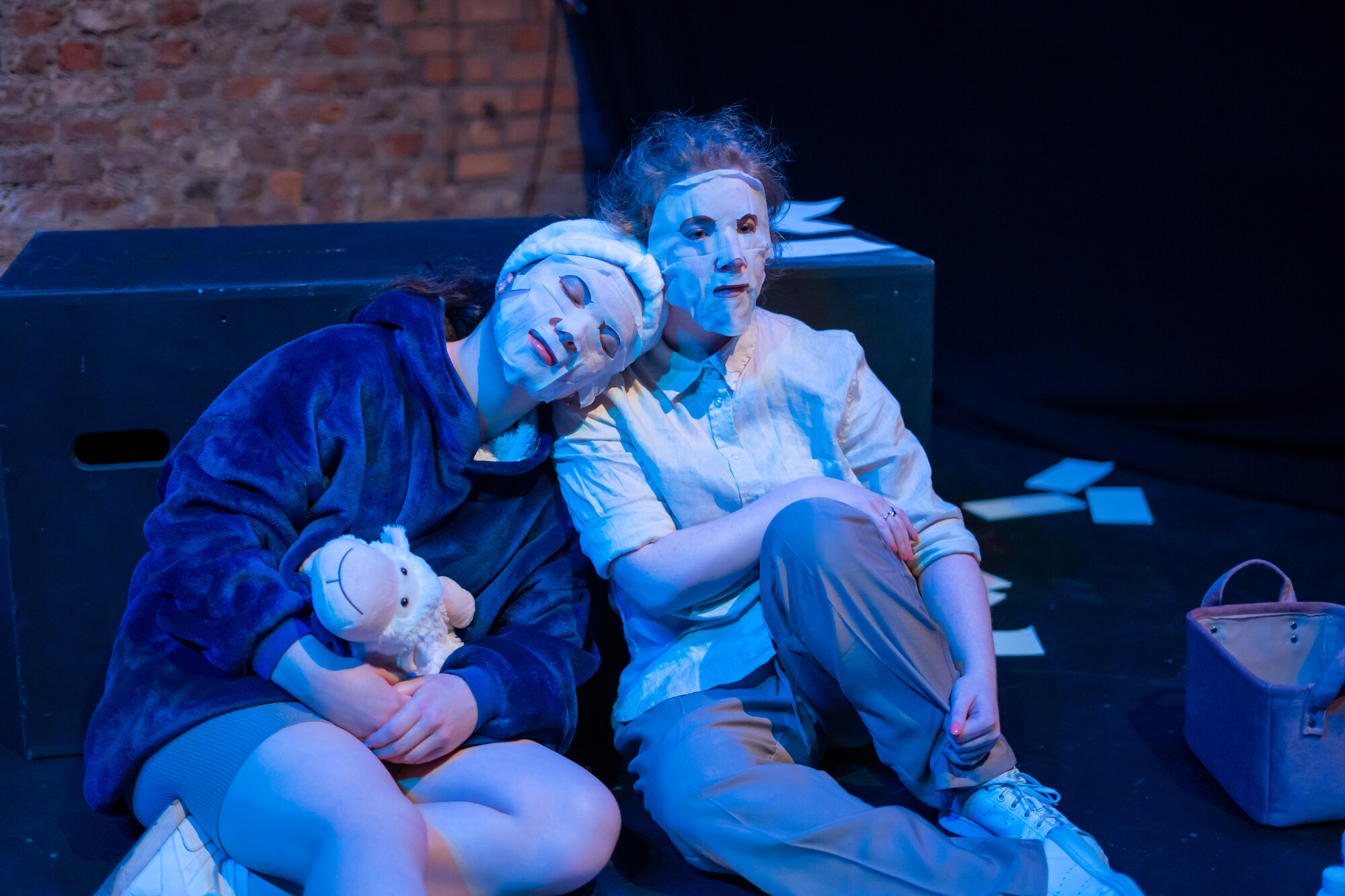Within what Bryan S. Turner calls a Western “ideology of able-ism,” the sick body will continuously fail to adhere to a society that celebrates aestheticization as an essential element in the process of belonging within the greater community. Furthermore, the introduction of chronic medical conditions to the human body can cause a rupture in the mind’s perception of the body and its abilities, therefore damaging one’s sense of “self” and the understanding of the self’s positioning within societal spaces. This certainly held true in my own personal experiences as someone struggling to accept the effects of multiple chronic illnesses on their own life. As a theatre practitioner, my sense of self had always greatly relied on my ability to perform. Yet, as my physical health continued to decline throughout the years, my frustration with my body’s inability to operate in the way it once had began to negatively impact my self-identification as an artist and the way in which I identified with the greater world around me. When these feelings began to emerge during my time as a Master’s student at University College Dublin and the Gaiety School of Acting, I looked to the concept of embodiment to better understand the disconnect I felt with my ailing body and my inability to rectify that body’s changes with my greater sense of identity.
Essentially, the onset of chronic illness can create a distance between the sense of self and the body, two entities that cannot exist without each other.
Repairing the Self-Body Connection Through Art
According to Turner’s research on embodiment—which he qualifies as the effect of “corporealization,” or “the mastery of body techniques… which produce and give ‘a body’ its place in everyday life”—the body and the self exist as separate entities. Turner goes on to write that while embodiment involves the process of “becoming a body, it is also the project of making a self.” While he believes that the self and body exist separately, he acknowledges that each symbiotically influences the other in the social process of embodiment. In this vein, a person’s sense of self can be greatly affected by the body’s status as a separate entity within shifting social spheres in which said process takes place. If the bodily entity falls ill or suffers trauma and is, therefore, no longer able to practice the previous expectations of its social embodiment, the self’s view of the body can begin to take on a negative perspective. In her 2013 essay, philosopher Havi Carel asserts that this “bodily doubt” stems from the loss of the “taken-for-grantedness” that accompanies the possession of an able body and the belief that such a body will continue to work fully within its past capabilities. As Carel’s “bodily doubt” infiltrates the psyche and the process of embodiment begins to break down, the interconnected self of those who live with chronic illness will suffer injury to the former sense of identity, both socially and metaphysically as experienced before the onset of illness. As a disrupter to Turner’s qualification of embodiment, “[chronic] illness presents specific interactional problems in which the individual must negotiate a new set of everyday practices that can manage the tensions between the self, the experience of embodiment, the biological changes, and the medical appropriation of the body.” Essentially, the onset of chronic illness can create a distance between the sense of self and the body, two entities that cannot exist without each other. As this separation pervades life’s experiences, people suffering from unexpected chronic conditions may begin to “[experience] the body as being beyond the self,” to borrow from the writing of endurance performance artist Martin O’Brien; this phenomenon further limits those experiencing such from undertaking the full breadth of interconnected human embodiment, both within their own existence and in their social, communal relationships.
Upon gaining a better understanding of my own struggles with “bodily doubt” and its effects on my identity as an artist, I began to wonder if theatre, both as a practice and as a spectatorial event, could serve to heal this metaphysical wound in the lives of people with chronic illnesses. Could witnessing or participating in such an intrinsically physical art form like theatre aid in healing the self-body connection for members of the chronically ill community? Could it repair their relationships with the world around them? In an attempt to answer these questions, I looked to the work of American choreographer Anna Halprin and her utilization of dance as a healing art and practice for those who are terminally ill. By embracing Halprin’s work and recontextualizing its usage in theatre practice, I hypothesized that a theatrical piece, developed with the intention to guide an audience through the healing process, could begin to mend the relationship between a spectator’s body and sense of self, particularly for those who have suffered deconstruction due to the onset of chronic illness. Furthermore, I believed this work could begin to revitalize the relationship between chronically ill theatre spectators and society at large through the inevitable communality of witnessing theatre.
First, the subject must utilize movement-based art to reflect internally in order to identify the object of their metaphysical suffering.
In her 2015 guide to healing, Returning to Health: with Dance, Movement, and Imagery, Halprin reminds those who witness her work that to heal is not to cure. Healing is a process open to any who wish to undertake it. It can allow the subject to achieve a togetherness with their body and the world around them; a cure is a clinical event. Furthermore, within a clinically mediated culture that has been indoctrinated with the Cartesian belief that the mind and the body exist as separate entities, Halprin writes that “[the] mind, the heart, the soul, and the spirit is the body, not separate from it,” and that we must “return to our bodies” to begin healing.
Halprin’s teachings reflect this journey through a prescribed process: first, the subject must utilize movement-based art to reflect internally in order to identify the object of their metaphysical suffering. This allows them to undertake a confrontation with their darkest internal conflicts. Halprin argued that it is through physicalization of the moving body, which functions as a conduit for expressing this reflection, that the subject will feel a great sense of “release.” Halprin believed that once this initial process has been explored through the witnessing or experience of physical movement, the subject can begin to embrace the healing version of themselves, the version that can rediscover “a deep sense of the real connection between [the] body and the world around [them].”













Comments
The article is just the start of the conversation—we want to know what you think about this subject, too! HowlRound is a space for knowledge-sharing, and we welcome spirited, thoughtful, and on-topic dialogue. Find our full comments policy here
🧡🧡🧡 this embodied conversation around how theatre helps heal! we know these dynamics happen; by discussing it, writing for it, etc., we engage intention which adds to the efficacy of the healing dynamic. yeaaaaa! 🤗